Every young person who contacts the National Runaway Safeline has their own set of strengths, stories, and challenges. Though every person who contacts us is unique, there are some skills that can greatly benefit young people experiencing all kinds of crises. At the foundation of these skills rests communication and listening which is why they are the focal points of Module 1: Communication and Listening in our free Runaway Prevention Curriculum.
During Module 1 of the Let’s Talk: Runaway Prevention Curriculum, young people can learn communication and listening skills needed to maintain positive relationships with their friends, family, and peers. Fostering positive connections with their community makes young people feel supported and can go a long way in terms of preventing run episodes.
Module 1 focuses on:
- Providing youth with active listening skills
- Identifying common barriers to effective communication
- Building confidence in youth so they can effectively communicate during a crisis
- Simulating crisis scenarios so youth can practice problem-solving
This module uses several teaching styles to meaningfully engage everyone involved in the activities. One of the activities is called “Listening to Communicate and Barriers to Communication”. In this activity, students act out what it means to be a good listener and a bad listener with a partner. Afterward, they work together to name the qualities that defined a good vs. bad listener. In addition to identifying these qualities, students reflect on how it felt to be on the receiving end of each of these kinds of listeners. Students can carry this activity with them into their daily lives by using the “Listening Journal” worksheet provided during this session.
Another activity called “Communicating During a Crisis” equips students with skills from the crisis intervention model we use to train all of our crisis line volunteers. Students learn to apply these skills in their own lives when a friend is experiencing crisis. Much like our liners, students are taught to establish rapport, explore facts and feelings, focus on the main issues, and explore options. This model allows the person experiencing a crisis to explore feelings while still remaining focused on developing solutions. Empowering people with these skills allows them to make a positive impact in their peer relationships and at the same time it demonstrates that crises are manageable.
Each module of our curriculum acts as a valuable resource for young folks, but our first module focuses on communication and listening because these skills are fundamental to the rest of our curriculum. We encourage you to look through Module 1 and see how the activities could be beneficial to young people in your community. Learn more about this module and the rest of our Let’s Talk: Runaway Prevention Curriculum here.



